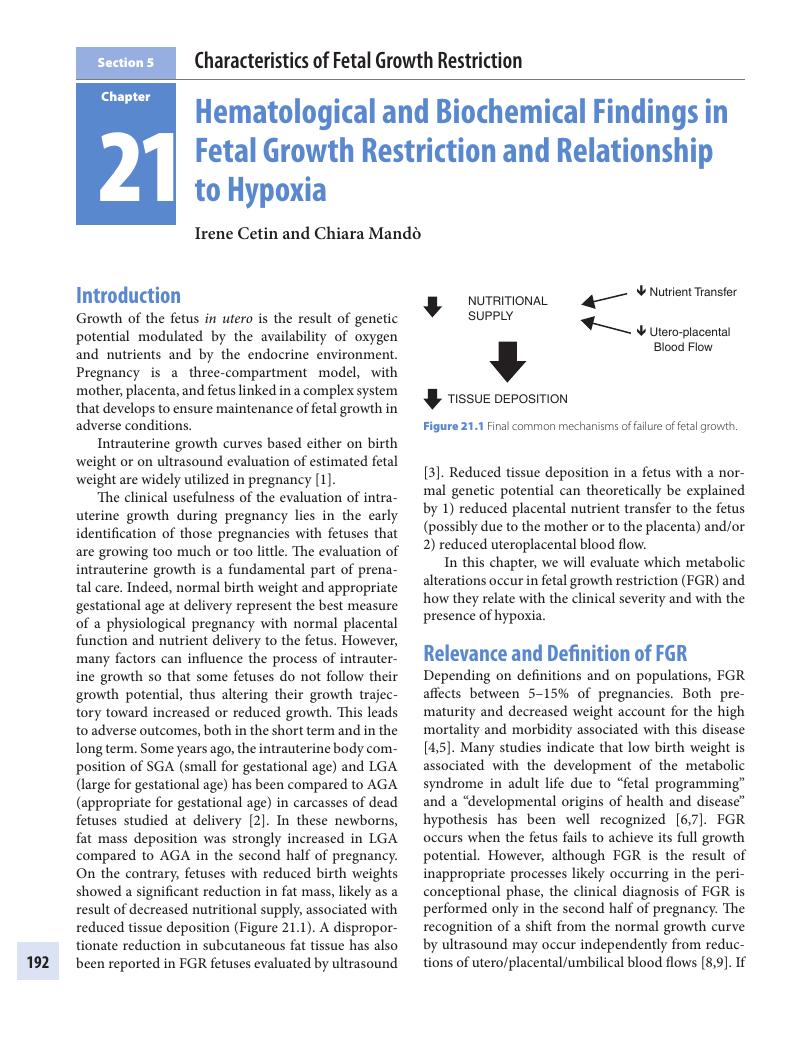Book contents
- Placental–Fetal Growth Restriction
- Placental–Fetal Growth Restriction
- Copyright page
- Contents
- Contributors
- Foreword
- Preface
- Glossary and Commonly Used Abbreviations
- Section 1 Basic Principles
- Section 2 Maternal Cardiovascular Characteristics and the Placenta
- Section 3 Screening for Placental–Fetal Growth Restriction
- Section 4 Prophylaxis and Treatment
- Section 5 Characteristics of Fetal Growth Restriction
- Chapter 17 Blood Flow Volume in Umbilical Vein in Fetal Growth Restriction
- Chapter 18 Fetal Cardiac Function in Fetal Growth Restriction
- Chapter 19 Heart Rate Changes and Autonomic Nervous System in Fetal Growth Restriction
- Chapter 20 The Fetal Arterial and Venous Circulation in Fetal Growth Restriction
- Chapter 21 Hematological and Biochemical Findings in Fetal Growth Restriction and Relationship to Hypoxia
- Section 6 Management of Fetal Growth Restriction
- Section 7 Postnatal Aspects of Fetal Growth Restriction
- Index
- References
Chapter 21 - Hematological and Biochemical Findings in Fetal Growth Restriction and Relationship to Hypoxia
from Section 5 - Characteristics of Fetal Growth Restriction
Published online by Cambridge University Press: 23 July 2018
- Placental–Fetal Growth Restriction
- Placental–Fetal Growth Restriction
- Copyright page
- Contents
- Contributors
- Foreword
- Preface
- Glossary and Commonly Used Abbreviations
- Section 1 Basic Principles
- Section 2 Maternal Cardiovascular Characteristics and the Placenta
- Section 3 Screening for Placental–Fetal Growth Restriction
- Section 4 Prophylaxis and Treatment
- Section 5 Characteristics of Fetal Growth Restriction
- Chapter 17 Blood Flow Volume in Umbilical Vein in Fetal Growth Restriction
- Chapter 18 Fetal Cardiac Function in Fetal Growth Restriction
- Chapter 19 Heart Rate Changes and Autonomic Nervous System in Fetal Growth Restriction
- Chapter 20 The Fetal Arterial and Venous Circulation in Fetal Growth Restriction
- Chapter 21 Hematological and Biochemical Findings in Fetal Growth Restriction and Relationship to Hypoxia
- Section 6 Management of Fetal Growth Restriction
- Section 7 Postnatal Aspects of Fetal Growth Restriction
- Index
- References
Summary

- Type
- Chapter
- Information
- Placental-Fetal Growth Restriction , pp. 192 - 199Publisher: Cambridge University PressPrint publication year: 2018



